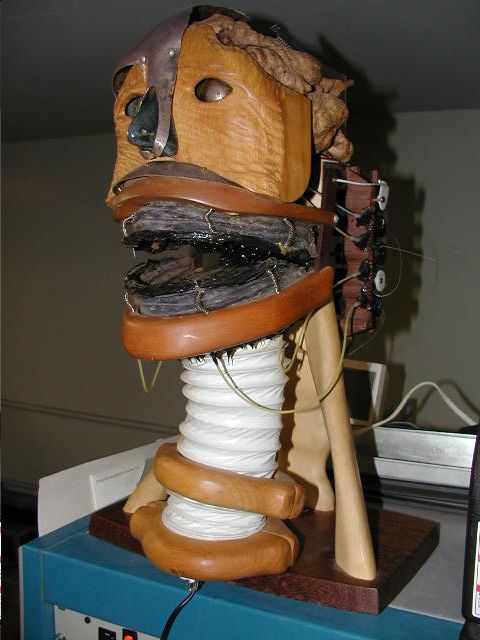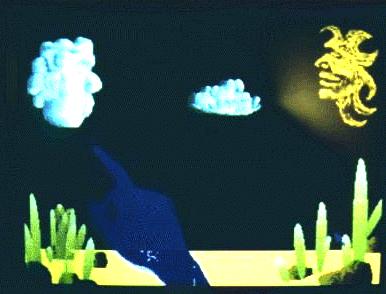The Babbling Head Robot, better known as Babbling Head is one of The Robot Group’s iconic exhibits.
Babbling Robot Head is perhaps one of the finest examples of our group’s efforts to meld art and technology. It is certainly one of the classiest. Brooks Coleman, a genius at wood-crafting, designed and crafted the various wood elements that went into this piece. These wood elements are as diverse and as rich as purple heart and oak and as raw as tanzania root.
The base of the piece is purple heart wood and the neck and collar bones are pow amavia woods. The organic brain in this robot is a piece a tanzania root that Brooks filed and fitted perfectly to this piece.
The rawness and natural ridges of the wood root give it a very natural organic-looking brain.
Brooks, who also does metal forging, tailored the metal nose and half head piece for Babbling Head while Laurie Davis forged the eyes.
The eyeballs are hammered silver with LEDs illuminating the iris centers. The eyeballs are also servo-controlled and capable of rolling.
The neck and the lips are made of soft plastic for mobility. The lips are molded black silicone and the neck-pipe piece is actually a dryer vent pipe.
The servos are each fitted with a winch pulley which Brooks turned from nylon. He machined a custom tool to create the spline that fits the standard Futaba servo shaft.
This robot is fitted with a Mini SSC II board that operates a series of hobby servo motors that move the lips, eyeballs and neck areas.
The DecTalk provides the computer voice that brings the Babbling Robot Head to life.
Alex Iles was instrumental in developing and programming the original exhibit controller for this piece. Bill Craig assisted with the original programming and the speech synthesis. Later, Eric Lundquist added real-time speech synchronization with the DecTalk.
At times, Babbling Head has been integrated into the Robot Brain project.
When last it spoke, Babbling Head revealed that it was awaiting some surgery. We look forward to its reappearance and to hearing it sing again.
Did we mention Babbling Head’s popularity? Some notable appearances :
- 2007-03 dorkbot / SxSW Festival (covered by BBC News)
- 2004-07 1st Annual CAM Carnival, San Antonio, TX
- 2003-08 Film debut in Armadillo News
- 2003-07 Comedy Central’s Insomniac with Dave Attell
[Text and images originally from http://wiki.therobotgroup.org/wiki/BabblingHead

